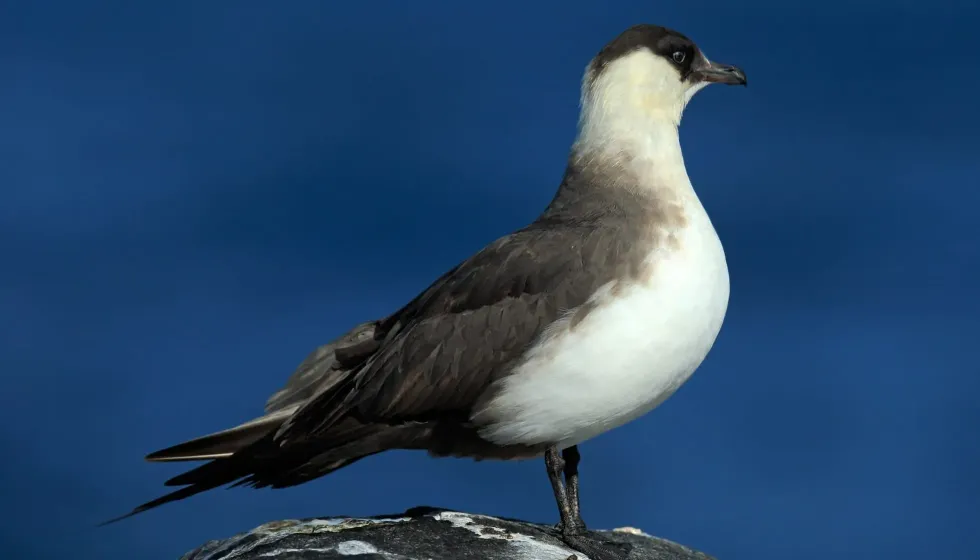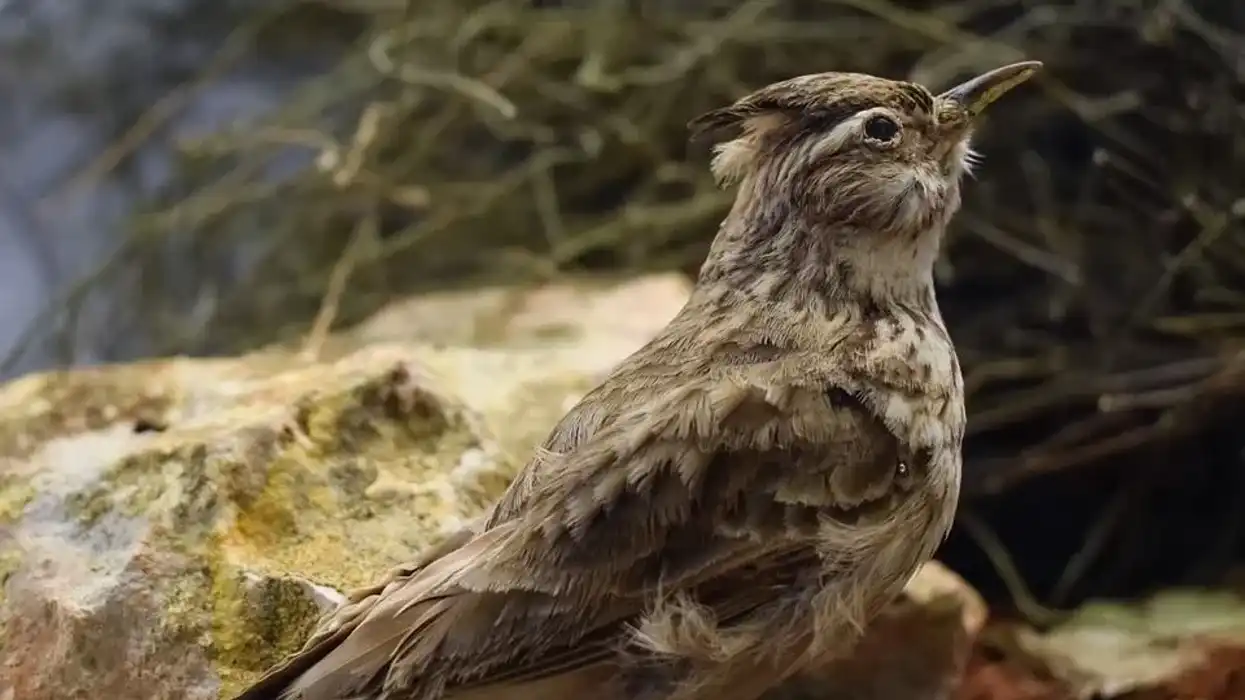If you are looking for interesting birds in the Arctic zones, then the Arctic skua might be your answer. Also known by the name parasitic jaeger, they belong to the genus Stercorarius and to the family Stercorariidae.
These birds are known for their kleptoparasitism, where they chase down other birds until they drop the food (especially fish) that they have.
The name of the birds has an interesting history. Skua is derived from the Faroese word for Skuvoy Island, which housed a large number of these birds.
While they are known to originate from the Arctic tundra zones, they are not endemic and migrate to coastal regions by the southern oceans. Instead, they only come on land to breed and spend the rest of the year in the oceans.
Scroll down to learn new things about Arctic skuas. For more info on similar species, take a look at woodlouse facts and great skua facts!
Arctic Skua Interesting Facts
What type of animal is an Arctic skua?
Arctic skua (Stercorarius parasiticus), or the parasitic jaeger (as it is called in North America), is a species of carnivorous seabird living in the Tundra region of the Arctic.
What class of animal does an Arctic skua belong to?
Being a relative of the gull by classification, the Arctic skua or the Stercorarius parasiticus is a member of the class of Aves.
How many Arctic skuas are there in the world?
The total number of parasitic jaegers in the world has been estimated to be around 400,000-600,000. According to the International Union For Conservation Of Nature or the IUCN, the population of these birds in Europe amount to around 112,000 individuals, with most of the birds nesting in countries of northern Europe.
Where does an Arctic skua live?
Parasitic jaegers are found in the tundra regions of north European countries. These places include countries like the Faroe Islands, Norway, Russia, parts of northern Canada, Iceland, and Greenland.
This species of seabirds almost exclusively breed in the countries mentioned. When not present in their breeding grounds, they can be found all over Europe, North America, and Japan.
Migrant populations of the Arctic skuas can be found in the southern hemisphere as far down south as Argentina and Chile. They are quite common in the coastal regions of South Africa and Australia.
A few vagrant populations have also been detected in places of mainland Africa and Asia. Arctic skuas can be also be found breeding in places of northern Scotland.
What is an Arctic skua's habitat?
Arctic skuas have an extremely varied habitat when compared to other Arctic seabirds. Therefore, you can divide the habitat range of this bird species into two parts: the breeding habitat and the non-breeding habitat.
The breeding habitat partially differs with respect to different countries. In places in North America, marshy tundra lands near lakes and coasts are preferred as breeding grounds.
On the island of Greenland, Arctic skuas are found in the vicinity of lakes and fjords. We can easily conclude that low-lying marshy areas are their preferred breeding sites with the only exception being Iceland. In Iceland, these seabirds can be observed building their nest sites in marshy depressions at an average elevation of 2300 ft (701 m).
The non-breeding habitats of the birds are limited to the sea and coastal areas. Estuaries and inlets are the places most visited by them when they travel down south during the migration flight.
Who does Arctic skua live with?
Arctic skuas are primarily solitary birds. Except for the time of the year when the breeding season commences, these birds are always alone.
Occasionally, they can be seen flying around with flocks of other gulls and birds, but that may be because they are chasing them for their food. During the breeding season, the Arctic skuas are always seen together in pairs.
How long does an Arctic skua live?
A parasitic jaeger usually has a lifespan of around 12 years. However, there have been specimens that have lived up to 20 years, with the oldest Arctic skua ever being at the age of 33 years in July 2020.
How do they reproduce?
Arctic skuas only land to breed during the summer months in the Arctic tundra. The pairs breed for life and return to the same nest sites each year. They might only change partners if there has been a death or if somehow their partner hasn't been able to reach the nest site for breeding.
Once the pair is formed, the male bird selects the nest, and the nesting call can be heard. After the mating has been completed, the eggs are laid.
These eggs are usually brownish-olive in color with a clutch size of one to four. In general, two eggs are the average. Once the eggs are laid, both the male and the female bird will incubate them for a period of 25-30 days.
The young bird or the hatchling can leave the nest in a few days, yet many choose to stick around with the parents. Parents, in turn, feed their young by regurgitating food.
What is their conservation status?
In reports published by the International Union For Conservation Of Nature, or the IUCN, Arctic skuas have been given the status of Least Concern in the conservation Red List. This is due to the fact that there are currently no major threats affecting their lives.
However, climate change resulting in loss of breedable land and the reduction of food available in the wild can be major concerns for the future of this bird species.
Arctic Skua Fun Facts
What does Arctic skua look like?

Arctic skuas are medium-sized birds with two different morphs of plumage coloration. The light-colored morphs have brown backs with white underparts and dark feathers on their wings.
On the other hand, birds with dark morphs are somewhat different. They have dark brown plumage all over their body; however, they do retain the white feathers on the wings. Apart from this, there are intermediate light and dark morphs, which are a mixture of white, pale, and dark brown plumages and are seen especially in young birds.
This species is also known for having two central tail feathers. These central tail feathers are narrow and straight. Young birds and juveniles can be differentiated from adults because, for them, these tail feathers aren't fully developed. Long-tailed jaegers can also be distinguished from Arctic skuas due to their tail feathers.
Interestingly, the bill of the Arctic skuas is hooked and gray in coloration.
How cute are they?
Being predators, there is nothing really adorable and cute about these birds. However, some may find their light and dark color morphs to be beautiful.
How do they communicate?
Like all birds, the Arctic skua mainly communicates using calls. These avians are mostly silent except for a few calls.
The primary call of the bird is a series of three to four calls that can rise up to 12 when they are in flight. There are also short calls that are used to defend their territories or while attacking other birds or humans.
How big is an Arctic skua?
Arctic skuas are not very big in regards to their size. The average size of the bird varies from 16–19 in (40.6-48.2 cm).
The length of the wings is quite long too, up to 42-46 in (106.6-116.8 cm). Interestingly, there is sexual dimorphism within the males and the females, with females being larger than males. In comparison, Arctic terns are slightly smaller than them.
How fast can an Arctic skua fly?
In general, the Arctic skua is a bird whose flight speed is quite fast. While we do not know their exact speed as they fly over sea and land, there are some reports that tell us they can dive and fly at over 50 mph (80.4 kph) while chasing other birds.
How much does an Arctic skua weigh?
The weight of the Arctic skua varies between 10-22 oz (283.4-623.6 g).
What are the male and female names of the species?
Arctic skua males and females are simply referred to by their common name.
What would you call a baby Arctic skua?
A baby Arctic skua can be called a hatchling or a chick.
What do they eat?
Being carnivores, Arctic skuas have a habit of chasing other birds so that they can regurgitate food items like fish. This behavior is known as kleptoparasitism. During the breeding season, the bird species mainly feed on rodents, fish, eggs, and other smaller birds.
Are they dangerous?
While they can attack and wound humans, these attacks are not fatal. Thus, Arctic terns are only dangerous to a certain degree!
Would they make a good pet?
No, these birds would not make good pets as they are best suited to living amongst the tundra wildlife.
Did you know...
Arctic skuas may have some predators who prey on them and their eggs like the American mink, Arctic fox, and glaucous gulls. Skuas, in turn, can also prey on the eggs of gulls.
Why are Arctic skuas so aggressive?
The need for Arctic skuas to chase other birds for their food results in their aggressive behavior.
Do Arctic skuas migrate?
Arctic skuas migrate great distances over sea and land during the winter months. They almost always cross the equator and travel to the southern hemisphere.
Here at Kidadl, we have carefully created lots of interesting family-friendly animal facts for everyone to discover! For more relatable content, check out these Gouldian finch fun facts and house finch facts for kids.
You can even occupy yourself at home by coloring in one of our free printable African quailfinch coloring pages.










